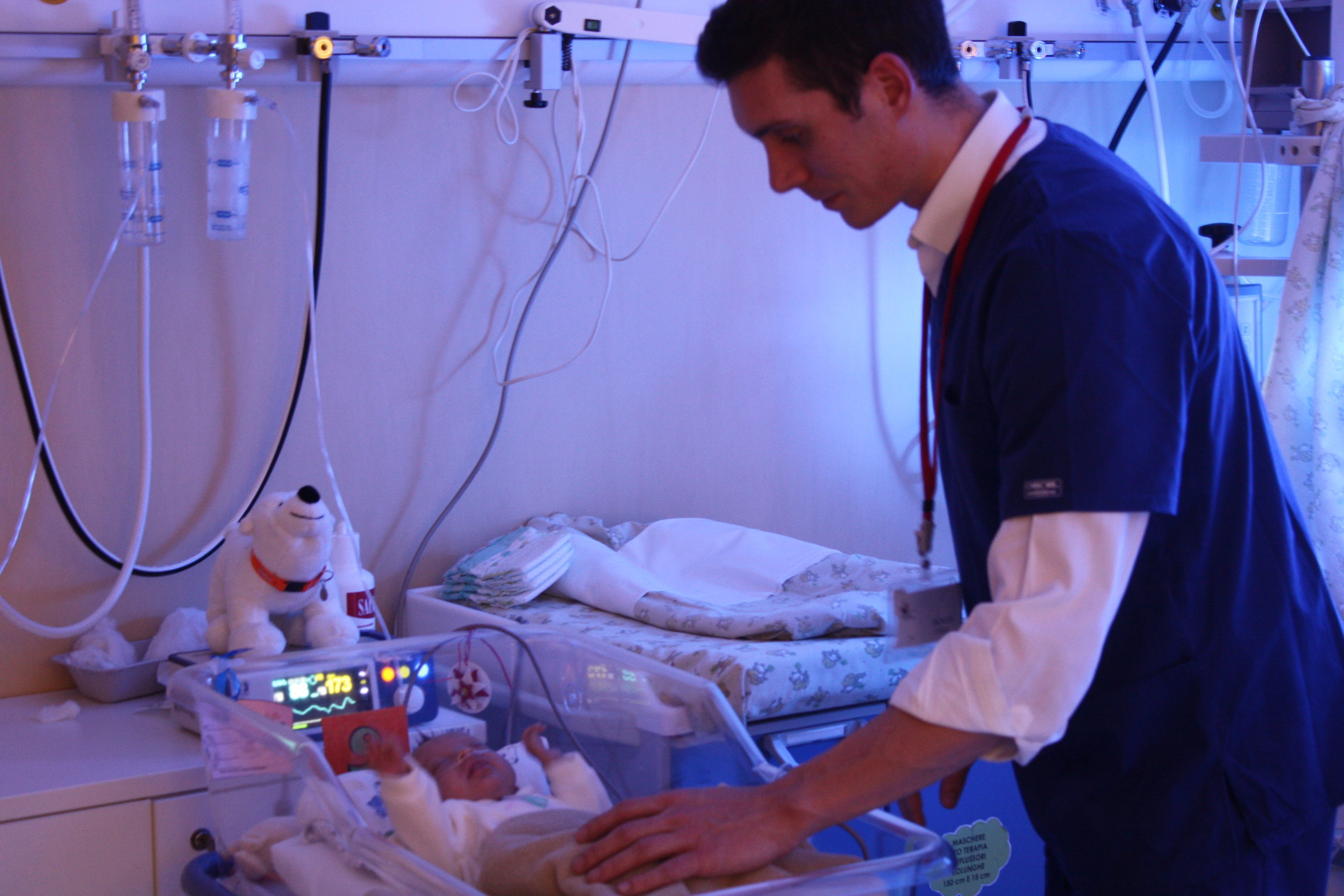
THE GENOTE BLOG
Inspiring, creating and living Health Music
Music’s Impact on the Brain: A Tool for Emotional and Cognitive Growth in Special Education
For students with special needs, music offers more than just enjoyment—it’s a powerful way to support both emotional and cognitive development. Research shows that music engages specific areas of the brain responsible for emotions and problem-solving, helping students manage feelings and focus on learning. In this blog, we’ll explore how music impacts the brain and offer insights into how you can use it effectively in your classroom.
How Music Activates the Brain
When students listen to music, their brains respond by activating key areas related to emotions and cognition:
Emotional Centers:
The amygdala and hippocampus play a role in processing emotions. These regions help students recognize and manage feelings evoked by music—whether it’s joy, calm, or sadness.Cognitive Areas:
The frontal cortex is stimulated during music processing, supporting attention, memory, and problem-solving skills. This is why music can help students stay focused and engaged with learning activities.
Positive and Negative Emotions in the Brain
Different types of music activate distinct parts of the brain:
Positive Emotions: Music that evokes happiness, like upbeat or familiar songs, activates areas in the left hemisphere of the brain. These regions are associated with motivation, creativity, and social interaction.
Negative Emotions: Music with a slower tempo or minor key, like sad or tense music, stimulates areas in the right hemisphere, including the amygdala, which processes emotions like fear or sadness (Trost et al., 2012).
Why This Matters in Special Education
Understanding how music affects the brain can help teachers use it as a tool for emotional regulation. For students who struggle with managing feelings, music can activate pathways in the brain that encourage calm and focus.
Regulating Emotions: Playing calming music during stressful moments can soothe anxious students. Similarly, cheerful music can lift students' moods during low-energy times.
Improving Focus and Problem-Solving: The activation of cognitive areas means that music can enhance students' ability to stay on task and solve problems. Integrating background music during independent work time can help students with attention challenges.
Practical Ways to Use Music in the Classroom
Here are some simple ways to integrate music into your lessons to support emotional and cognitive development:
Create a “Calm Down” Playlist
Use soft, instrumental music to help students self-regulate during transitions or after moments of frustration.Boost Mood with Upbeat Songs
Play lively music at the start of the day or before a lesson to energize students and set a positive tone.Incorporate Music into Problem-Solving Activities
Background music can enhance focus during tasks that require concentration, like puzzles or independent work.Use Emotional Check-In Songs
Start the day with a song that encourages students to reflect on how they feel, helping them connect emotions to musical cues.
Conclusion
Music is a powerful tool for teachers working with students with special needs. By engaging areas of the brain responsible for emotions and cognition, music can help students regulate feelings, improve focus, and enhance problem-solving. With thoughtful integration, you can create a classroom environment where students feel supported emotionally and academically.
Next time your students are feeling overwhelmed or distracted, try playing a song—you might be surprised by the positive impact it has!
References
Trost, W., Ethofer, T., Zentner, M., & Vuilleumier, P. (2012). Mapping aesthetic musical emotions in the brain. Cerebral Cortex, 22(12), 2769–2783.
Organizing Information Through Music: A Key to Better Learning for Students with Special Needs
Music is more than entertainment—it’s a powerful tool for helping students with special needs process and retain information. Research shows that our brains naturally organize musical elements into meaningful patterns called Gestalts (Lipscomb, 1996). This pattern recognition makes music an excellent way to simplify tasks, improve memory, and enhance learning. For students who struggle with traditional methods, music offers a way to engage with content in a meaningful and accessible way.
How Music Structures Information
When students with special needs engage with music, their brains group similar sounds and rhythms into manageable patterns. This mental organization helps break down complex information, making it easier to understand. Think of it like putting puzzle pieces together—music provides structure that makes it easier for students to grasp the whole picture.
Efficient Processing: Connecting concepts to rhythms or songs helps students grasp ideas more quickly. For example, using a song to guide math steps turns a challenging process into a familiar pattern.
Memory Enhancement: Rhythm and repetition anchor information in long-term memory. A melody tied to a lesson serves as a mental bookmark, making it easier for students to recall what they’ve learned.
Practical Ways to Use Music for Learning
Incorporating music into your classroom can make routines and lessons more manageable for students with special needs. Here are a few ideas to try:
1. Use Songs to Teach Routines
Teaching daily routines through songs helps students remember steps without needing constant reminders. Music makes transitions smoother and builds independence.
Example:
A “morning routine song” can guide students through tasks like hanging their backpacks and sitting at their desks. This creates consistency and prepares students for a successful day.
2. Teach Sequences with Rhythmic Patterns
Using rhythms can make it easier for students to understand and remember sequences, such as spelling words or number patterns. Rhythm reinforces learning through repetition and creates patterns that stick.
Example:
Clapping out syllables of spelling words or chanting math facts turns lessons into interactive experiences, helping students retain information.
3. Use Melody to Simplify Complex Concepts
Difficult subjects like science or math become more accessible when paired with familiar tunes. Songs break down complex concepts into smaller, more understandable steps.
Example:
A song about the water cycle—evaporation, condensation, precipitation—makes it easier for students to remember each stage.
Why It Works: The Science of Gestalts
According to Lipscomb (1996), our brains naturally organize information into Gestalts—or meaningful patterns. This is why musical patterns are easier to remember than isolated facts. For students with special needs, engaging with music offers a way to organize new information into familiar, meaningful structures. It’s not just about listening—students are actively creating connections that support both understanding and memory.
Conclusion
Music provides a simple and effective way to support learning for students with special needs. It helps them process information efficiently, remember it longer, and engage with lessons in a fun and accessible way. Whether you’re teaching routines, academic content, or new sequences, integrating music makes learning more manageable and enjoyable.
So, the next time you introduce a new concept or routine, try putting it to music—you might be surprised how quickly your students catch on!
Reference
Lipscomb, S. D. (1996). Cognitive organization of musical sound patterns. Psychomusicology, 15(1-2), 105–126.
Why Music Matters in Emotional Development for Your Students
Hi there! I want to share with you how powerful music can be in supporting your students’ emotional development, especially those with special needs. You already know how emotions play a huge role in learning—when students feel frustrated or overwhelmed, it’s tough to keep them engaged. Music can be your secret weapon to help manage those emotions and make learning a more enjoyable experience for everyone.
The Connection Between Music and Emotions
Philosopher Daniel Berlyne (1971) explained that the complexity of a task can affect how students feel.
Too Complex Tasks: When something is too hard, it creates stress and frustration. Students might avoid these tasks altogether.
Too Simple Tasks: When something is too easy, students get bored and disengaged.
This is where music shines—it helps find that “just right” level of engagement. It can organize information into manageable pieces, making learning feel easier and more fun for your students.
How Music Can Help Your Students
Music has this amazing way of structuring even the most difficult tasks into patterns that are easier to follow. Let’s break down how you can use it:
1. Balance Complexity with Music
Songs, rhythms, and repetition help simplify tasks. For example, teaching routines through a song breaks steps into smaller chunks that are easier for students to follow and remember. Music offers structure—just like a beat helps us dance in time, it guides students through learning at a comfortable pace.
2. Reduce Frustration
Have you noticed how your students sometimes shut down when things feel too hard? Playing a familiar tune or using rhythmic patterns can lower those emotional barriers. Music creates a sense of familiarity and comfort, making challenging tasks feel less intimidating.
3. Boost Engagement and Participation
Music makes learning fun! When students are enjoying themselves, they’re more likely to stay engaged. A simple song during transitions or a musical activity can keep everyone on track. And when students are engaged, they retain more of what they learn.
Adjusting Energy and Emotions with Music
You can also use music to match the energy of your classroom:
Too Much Energy? Calm, soothing music helps students settle and refocus.
Too Little Energy? Upbeat songs or rhythmic clapping games can re-energize your students and spark participation.
This flexibility gives you another way to meet students where they are emotionally.
A Simple Idea to Try
Consider making a small chart that shows how different types of music affect emotions. You can use it to help your students recognize their feelings—"I feel frustrated, so let’s try a calming song,” or “We need to wake up, let’s play something lively!” It can empower students to regulate their emotions through music.
Final Thoughts
Music is more than just background noise—it’s a powerful tool that can transform your classroom. By using music intentionally, you can help your students manage their emotions, stay engaged, and build confidence in their learning. Whether it’s calming nerves or boosting excitement, music meets students exactly where they are, supporting both their emotional and academic growth.
References
Berlyne, D. E. (1971). Aesthetics and Psychobiology. Appleton-Century-Crofts.
Koelsch, S. (2014). Brain correlates of music-evoked emotions. Nature Reviews Neuroscience, 15(3), 170–180.
Lipscomb, S. D. (1996). Cognitive organization of musical sound patterns. Psychomusicology, 15(1-2), 105–126.
Saarikallio, S., & Erkkilä, J. (2007). The role of music in adolescents' mood regulation. Psychology of Music, 35(1), 88–109.
Ross, S. (2016). Music therapy and emotional exploration: Exposing the dark side. Music Therapy Perspectives, 34(2), 156–161.
Thank you for the amazing work you do! I hope this gives you some inspiration for using music to support your students' emotional growth. 🎵
The Power of Repetition and Controlled Environments in Special Education
As educators and caregivers, we understand that the beginning of a new school year can be both exciting and daunting for students, especially those in special education. Establishing a predictable, controlled environment with routine practices can significantly reduce anxiety and enhance learning. This blog explores the psychological benefits of repetition and controlled environments, utilizing examples like Mr. Rogers' Neighborhood and the musical structure of Bach’s fugues, to highlight effective strategies, including the use of Genote, in fostering such environments.
The Comfort of Consistency: Learning from Mr. Rogers
Fred Rogers, the beloved host of Mr. Rogers' Neighborhood, demonstrated the power of repetition and routine in his television show. Each episode began in the same comforting manner, with Mr. Rogers entering his home, changing into his sweater and sneakers, and singing his welcoming song. This predictability created a safe, predictable space for children, many of whom thrived on the reassurance that some things remain constant. Mr. Rogers’ routine helped children feel secure, making it easier for them to open up to new ideas and learning experiences.
Harmony in Repetition: Bach’s Fugues
Musically, the structure of Bach's fugues offers a fantastic analogy for the benefits of structured learning environments. A fugue begins with a single voice expressing a theme, which is then imitated by other voices in succession. This repetitive theme, woven through varying yet controlled auditory patterns, exemplifies how repetition can aid in forming cognitive pathways that facilitate learning and memory retention.
Implementing Genote in Key Moments of the Day
Incorporating Genote’s music protocols during key parts of the school day, such as the beginning of classes and transition times, can replicate these benefits of repetition. By consistently using specific music cues, students can better adjust to changes in activity, reducing behavioral issues and stress that often accompany transitions. For instance, a calming melody at the start of the day sets a peaceful tone, while a different, yet equally familiar melody can signal the time to switch activities or prepare to go home.
Conclusion
By embracing the principles of repetition and controlled environments, as demonstrated by Mr. Rogers and the structure of Bach’s fugues, and integrating tools like Genote, educators can create a more effective, inclusive, and supportive learning environment. As the new school year begins, let's focus on establishing these reliable patterns to help all students, especially those in special education, to succeed and thrive in a predictable and harmonious setting.
For more insights and resources on implementing these strategies, visit our dedicated Genote’s USDB Health Music Program page.
By fostering a consistent, repetitive environment, we empower our students to navigate their educational journey with confidence and calm, paving the way for a successful and productive school year.
Are Classroom Transitions Stressful for You and Your Students?
Transforming Classroom Environments with Structured Morning Welcomes
Creating a welcoming and secure classroom environment is crucial, especially for students with diverse needs, such as those in special education settings. One approach that can help is using structured morning welcomes that include music listening, leveraging the soothing power of music to set a positive tone for the day.
The Importance of Smooth Transitions in Special Education
Transitions between activities can be particularly challenging for students with special needs. Research indicates that these students often experience higher levels of stress and anxiety during changes in routine, which can impede learning and emotional well-being. According to a study by Rehfeldt et al. (2012), structured transitions with clear cues help reduce these stresses, thereby enhancing the learning environment.
The Role of Music in Special Education
Music is more than just a background element in our lives; it is a powerful tool that can influence mood and behavior. According to Koelsch (2009), music listening and production engage brain structures that are key to cognitive, sensorimotor, and emotional processing. This brain involvement makes music particularly effective in managing mood and behavior in classroom settings.
Additionally, music offers considerable benefits for emotional and behavioral management. Aubé et al. (2013) found that music therapy can aid in managing classroom dynamics, especially during transitions.
Choosing the Right Genote Music Protocol
Finding the right music protocol within Genote to start the day involves understanding both the specific needs of the students and the desired atmosphere. Genote offers a range of protocols designed to address different sensory needs and emotional states. Here is a simplified method to help you select the most suitable protocol:
Assess the Classroom Needs: Evaluate the general mood and energy levels of the students. Are mornings typically chaotic, or do students struggle with low energy?
Preview Protocols: Listen to snippets of different Genote protocols that are crafted for calming and centering.
Experiment and Observe: Try different protocols over several mornings and observe the impact on the students’ behavior and engagement.
Gather Feedback: If possible, get feedback directly from the students about how the music makes them feel.
Regularly Update Choices: As the classroom dynamics evolve throughout the year, adjust the musical selections to fit the changing needs.
By starting each day with a structured morning welcome that includes specifically chosen calming melodies, teachers can significantly enhance the classroom atmosphere. This not only meets the immediate needs of helping students settle in, but also supports long-term educational goals by promoting an environment conducive to learning and growth. For more on integrating music into educational settings, explore more about Genote and its applications.
Music for Emotional Self-Regulation
Impressive capability of music for promoting emotional self-regulation: an interesting study describing the results of an evaluative research about music as mood regulation modalities in adolescents.
Adolescents need effective ways to regulate mood
Engagement in music is a goal-oriented activity of the psyche, whether or not individuals are consciously aware of it. The use of music in emotional management is acknowledged in much empirical research. However, there is little research that has tried to theorize these findings and specifically identify all the different regulatory processes. Also, general theories of mood regulation have received little attention in music research.
This interesting study aims at understanding the role of music as a part of the psychological functioning of the individual. This perspective reflects the ideas of John Blacking (1973), who stressed that music must always be understood in relation to the individual and the social environment. Similarly, Sloboda and Juslin (2001) have argued that there is an urgent need in the field of music and emotion to focus on the interaction between the person, the music and the context. Considering music as a resource for satisfying personal needs in everyday life is also one of the current interests of music sociology (DeNora, 2001), and this perspective is comparable to the ‘uses and gratifications’ approach, which studies individuals as active agents who use media for their personal needs (Arnett, 1995; Arnett et al., 1995; DeNora, 2001).
It would be reasonable to presume the main goals of mood regulation are quite similar regardless of factors like age or gender. However, the model is based on the experiences of adolescents, and some regulatory strategies, such as strong mood sensations and discharge, seem to fit especially well with the strong intensity and unrest of emotional experience in adolescence. Furthermore, in general, there may be a stronger need for an additional medium for mood regulation in adolescence due to the incomplete acquisition of sophisticated regulatory strategies. The music itself, as a typical feature of adolescent life, may be an easily approachable medium especially for the young. It seems important to be cautious in generalizing the findings too far beyond Finnish adolescents.
Music proved to be a versatile means for mood regulation. It offered the adolescents resources for increasing and restoring well-being, and made their emotional life more varied and colorful. The underlying motivation for the study was to clarify one piece of the puzzle in exploring the meaning of music. The study succeeded in demonstrating the impressive capability of music for promoting emotional self-regulation. The constructed model specified the different regulatory processes and provided a useful theoretical framework for the psychological inquiry of our musical behavior.
CALMING A CHILD
Trying to calm a child by placing him in front of any type of smart devices impedes his ability to learn to self-regulate. Parents and numerous educators will adopt smart devices as electronic candy, ignoring how it does not help the children's education and often thwarts their development.
Kids will remain fascinated bye electronic devices but he want to learn how to calm himself. The tablet, the phone do not educate, they capture the children's attention triggering responses that divert the child's learning abilities.
Using smart devices throughout the children’s daily set of activities poses real threats. Unless devices are used very rarely with parents constant monitoring the content, the screen, the appropriate apps, and the social activity.
Mostly, parents music limit the total time spent in front of the screen - which equates to less than 1 hour/day for kids between the age of 3 until 6. When we try to improve the situation by giving him/her a smart device, we hinder all self-regulatory opportunities both for the baby, and for the parent. That opportunity for growth is postponed and it's urgent need forgotten.
SITUATION
When Marco is taken to the doctor or might go out for lunch, the mother knows that he will become bored and will provide him with the electronic candy. The two of them will end up immersing themselves on their respective smart devices, self identifying themselves with whatever is being streamed and ignoring each other. Even homework for Marco, that now has become a habitual consumer of handheld devices, such as tablet and smartphone, will result in boring experiences and he might suffer from his attention span which has considerably diminished. The teacher might say that Marco might have some learning disabilities, but in reality that is not the case. He just needs to be educated.
MUSIC, TERM AND PREMATURE BABIES
The beginning of life is often a very stressful experience, even for otherwise healthy babies. Prior to birth, all the infant knows is the warm, safe, and quiet surroundings of being in the womb. The beginning of life brings cold, danger, and noise. All of the noise, particularly the hospital environment, can be detrimental to the newborn receiving the sleep it needs.
Specifically referring to studies conducted in Neonatal Intensive Care Units, we know the importance of sound.
Ås reported by Rich Haridy in New Atlas, on May 29th, 2019, an important study at the University of Geneva, shows that music can help build the brains of premature babies.
At Genote, Health Music is a valuable resource for reducing stress and increasing stability in newborn children. The existing research did not make clear what types of music would be best for this purpose.
Sixteen newborns were exposed to the Genote Sleep Music Protocol for thirty minutes twice per day. Their heart rate, blood oxygenation, pain scale, and behavioral states were measured within a half hour of exposure to the music.
The majority of the newborns showed improvement in their capacity to self-soothe and transition to a more relaxed state. Their sleeping patterns also improved. The positive impact of structured music listening on healthy newborns indicates the need for further study on the impact structured music could have on sick newborns.
Hear some of the new music used at the University of Geneva
See the video from Venice NICU
CHRISTMAS MUSIC IS MENTAL
You might have wondered why, during the holiday season, we are all forced to walk through various shopping areas while accompanied by Christmas tunes. Some of us, maybe lots of us, grow quite tired of listening to the same tune over and over. Some of us like the warmth of Bing Crosby and Judy Garland tunes, others like Kenny G, or the latest renditions of Il Divo, Josh Grobam, and Mariah Carrey. There are a lot of us who prefer the great performances of King Singers or Mormon Tabernacle Choir too. More precisely, we all tend to have a specific favorite version for each tune. Each tune, heard at the wrong time (and in the wrong way) can definitely rub us the wrong way and make us irritable, distant, and even depressed. The idea of having a favorite version of Christmas tunes that we find closer to our idea of home, family or music perfection is something worth pondering about. Certainly each song carries strong memories, sometimes even a specific tradition that we, in our families, have developed and wish to maintain.
But there is a deeper meaning attached to our preferences: we have developed music likes and dislikes not only for the way the tunes make us feel, but the way that such favorites are built. Many of us tend to dislike if not even feel offended by modern versions of our favorite holiday tunes if such versions do not follow the original musical structure. Many of us tend to like songs in their most simple version, with the original voice, and the original orchestration. We are certainly bothered if anyone attempts to tamper with the rhythm, the tempo, the key signature and the qualities of the Voice. That is simply because our wonderful ability to understand, listen and even discern music elements is linked to specific correlations between music structural elements and brain functions. We would suggest to pick very carefully your best holiday music by thinking about how the music can make you. Ponder about the memories that it triggers and watch any change in your mood. If you spend some time on this, not only you might end up with a more joyful experience, but you will probably make your days even more blissful with happy and thankful people around you. Listen to the great songs in the LINK and find your own favorites.
The birth of Genote corresponds to a concert performed by choirs, orchestra and soloist in Venice, on January 6th 2013.
IF MUSIC WERE ONLY FOR OUR EARS
The fascinating correlation between the arts, above average intelligence, high levels of task commitment and high levels of creativity.
A brilliant article from SciTech Connect offers a particularly interesting angle to evaluate the phenomena of music, arts, talent and human growth. Paula Thomson, Clinical Psychologist and Co-Director of the Performance Psychophysiology Laboratory at California State University Northridge explores the particularly difficult nature of human challenges often associated with creativity and performing arts.
The resulting conclusion of the article, seems to indicate that the single fact that often the arts (we don't care only about music!) are associated with sensibility, reasoning, problem solving, memory retention and curiosity, stands as fundamental reason for the therapeutic use (and effect) of the arts (especially music!). Tout-court, in Genote world, we read this fascinating article in the following way:
Since great music is composed by individuals endowed with above average intelligence (or talent), high levels of task commitment, and high levels of creativity, then anyone who will listen to such music, will have a better chance at developing similar skills and traits.
























